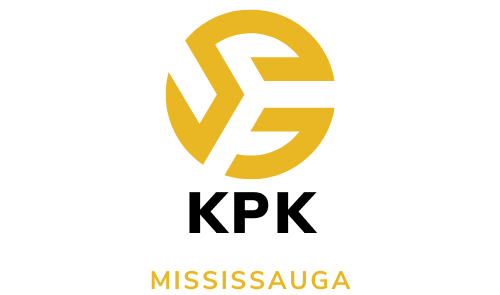Despite the plethora of challenges that have emerged due to climate change, overfishing, and pollution, sustainable fishing practices are being adopted globally to ensure the longevity of our marine ecosystems and the economic stability of our coastal communities. At the center of these practices lies a focus on sustainability, a term encompassing not just the physical act of fishing, but also fisheries management, data analysis, and a commitment to local and global economies.
Reinventing Fisheries Management for Sustainability
Fisheries management has historically focused on maximizing the yield of commercial species, often to the detriment of marine ecosystems. However, in recent years there has been a shift in focus towards more sustainable practices.
Lire également : How to prepare your cottage for sale : a step-by-step guide
Sustainable fisheries management aims at maintaining healthy fish stocks, reducing the impact of fishing on marine ecosystems, and supporting the economic viability of fishing communities. It involves measures such as setting catch limits based on scientific data, protecting important habitats, and implementing gear modifications to reduce bycatch – the unintended catch of non-target species.
This shift in management focus supports coastal communities by ensuring the long-term availability of fish stocks. It also reduces the impacts of fishing on the marine environment, thereby preserving the natural resources on which these communities depend.
A découvrir également : What is the role of community gardens in promoting local food sovereignty?
The Power of Data in Supporting Sustainable Fisheries
The role of data in supporting sustainable fisheries cannot be overstated. Accurate, timely and accessible data on fish stocks, catch rates, and fishing practices is essential for effective fisheries management.
This data supports coastal communities by providing the information necessary for sustainable management decisions. It allows for the tracking of fish stocks, the identification of overfished areas, and the implementation of corrective measures. In addition, data can be used to inform the development of new fishing technologies and practices that reduce the impact on marine ecosystems.
Without access to accurate data, fisheries managers and coastal communities are essentially fishing in the dark. With it, they can make informed decisions that support the sustainable use of marine resources.
The Economic Value of Sustainable Seafood
Sustainable fishing practices not only preserve the environment and fish stocks but also have significant economic benefits. Consumers are becoming increasingly aware of the environmental impact of their purchasing decisions and are willing to pay a premium for seafood that is sustainably sourced.
This change in consumer behavior supports coastal communities by increasing the value of their catch. It creates opportunities for economic growth and diversification, as fisheries can branch out into sectors such as tourism and eco-labeling.
Furthermore, sustainable fishing practices can increase the resilience of coastal communities to economic shocks. By maintaining healthy fish stocks, fisheries are less likely to experience sudden collapses that can lead to economic hardship.
Community-led Change: The Role of Local Communities in Sustainable Fisheries
Local communities play a critical role in sustainable fisheries management. They are often the most affected by changes in fishing practices and have a vested interest in maintaining healthy fish stocks.
Community-led change involves local communities in the decision-making process, ensuring that their knowledge and perspectives are taken into account. This can lead to more effective and equitable management practices, as well as increased community support for sustainable fishing.
Furthermore, community-led change can strengthen the social fabric of coastal communities. It can foster a sense of stewardship over local marine resources and create opportunities for social and economic development.
Balancing Marine Ecosystem Conservation and Fisheries
Safeguarding marine ecosystems while meeting the needs of fisheries is a delicate balancing act. However, it is a balance that must be struck to ensure the sustainability of both.
Marine Protected Areas (MPAs) are one tool for achieving this balance. By restricting fishing in certain areas, MPAs can help protect critical habitats and species, while allowing fish stocks to replenish.
MPAs support coastal communities by ensuring the long-term viability of their fisheries. They also provide opportunities for eco-tourism, further supporting local economies.
Sustainable fisheries management is not just about catching fish. It’s about supporting coastal communities and preserving marine ecosystems for future generations. By adopting sustainable practices, fisheries can ensure their own survival and contribute to the broader goals of environmental conservation and social development.
The Role of Innovative Fishing Gear in Sustainable Fisheries
In the pursuit of sustainable fisheries, innovative fishing gear plays a crucial part. By reducing bycatch and habitat damage, this new equipment can contribute to healthier marine ecosystems and more robust fish stocks.
Traditional fishing methods often cast a wide net, both figuratively and literally, capturing not only target species but also other marine life. This bycatch can include juvenile fish, non-target species, and even endangered creatures. Sustainable fishing practices aim to minimize this bycatch, and one way they achieve this is through the use of innovative fishing gear.
Advancements in technology have led to the development of selective fishing gear, designed to target specific species and sizes of fish. This gear includes elements like circle hooks, which are less likely to be swallowed by non-target species, and turtle excluder devices in shrimp trawls, which allow turtles to escape while retaining the shrimp.
The use of such gear supports small scale fisheries in coastal communities by reducing the waste of non-target species, potentially increasing the yield of desired fish, and ensuring compliance with regulations aimed at protecting endangered species. This can lead to a more sustainable and profitable fishing industry, promoting economic stability in these communities.
On top of this, the use of gear that causes less damage to habitats, like bottom trawls, helps to preserve the marine environment. Protecting these habitats is critical for maintaining fish populations and helping to mitigate the impacts of climate change.
Promoting Behavior Change for Sustainable Fisheries
Realizing the goal of sustainable fisheries doesn’t rely solely on management practices, data analysis, or technology. It also requires a behavior change from all actors involved, from the fishing communities themselves to the consumers who purchase seafood.
In coastal communities, promoting behavior change requires education about the importance of protecting fish stocks, the impact of overfishing, and the benefits of sustainable practices. This education can encourage communities to adopt more sustainable fishing practices, comply with regulations, and take an active role in managing their local fisheries.
Consumers also play a crucial part in this behavior change. As the demand for seafood continues to grow, so does the need for consumers to make more conscious choices. By choosing to purchase sustainably sourced seafood, consumers can drive the demand for sustainable fishing practices and support the communities that rely on these practices for their livelihood.
Advocacy organizations and governmental agencies, like NOAA Fisheries in the United States, can also play a pivotal role in promoting behavior change. They can do this by raising awareness about the importance of sustainable fisheries, lobbying for stronger regulations, and providing resources for education and training.
Conclusion: Fishing Forever in Harmony with Nature
Sustainable fishing is not a mere buzzword—it’s a necessity for our planet and for the coastal communities that heavily depend on the bounty of the sea. Embracing sustainable fishing practices, reinventing fisheries management, unlocking the power of data, understanding the economic value of sustainable seafood, fostering community-led change, leveraging innovative fishing gear, and promoting behavior change are all crucial steps towards this goal.
With the looming threats of climate change, overfishing, and pollution, it’s more important than ever to ensure the long-term survival of our marine ecosystems. By balancing the needs of marine conservation and fisheries, we can pave the way for a future where we can fish forever, supporting both the food security and economic stability of coastal communities.
Collaborative efforts involving fishery management organizations, local communities, governmental agencies, and consumers are crucial to making this vision a reality. Sustainable fisheries are not just about the fish—it’s about creating a future where people and nature can thrive together.











